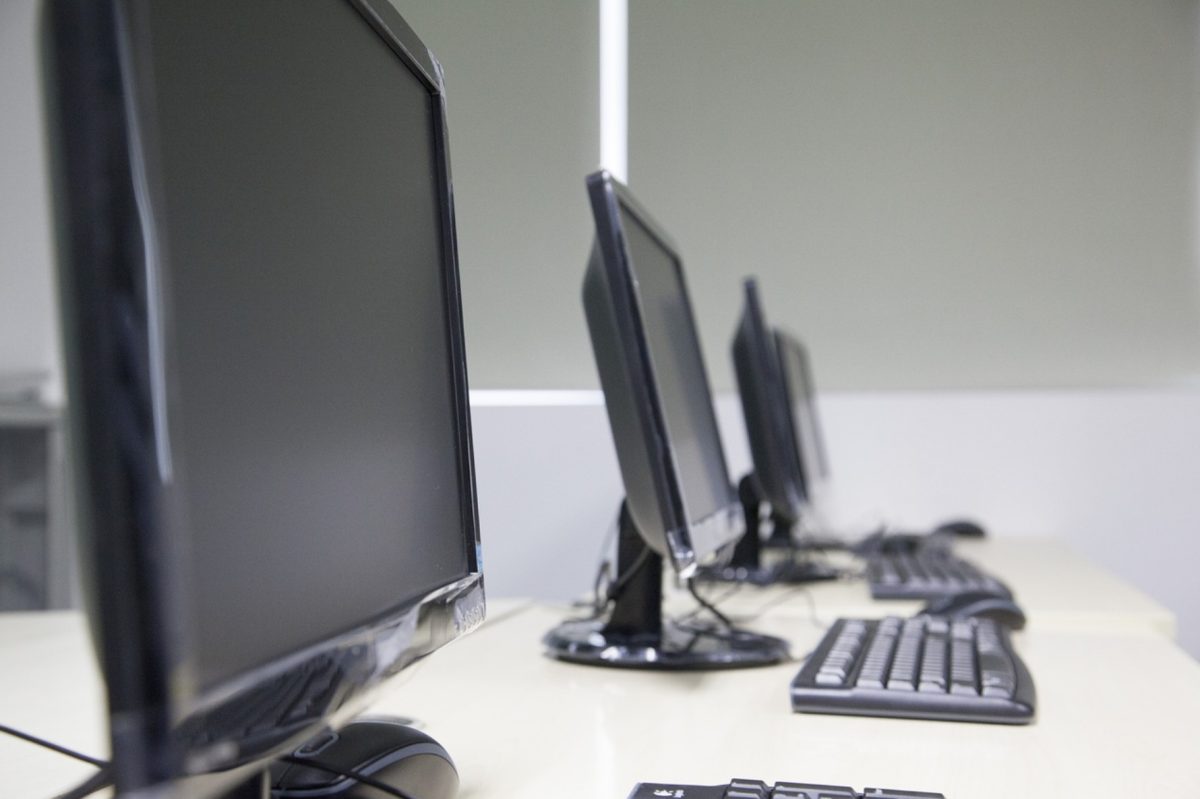
Image Source: pixabay
Over the past few decades, computer use in classrooms has increased dramatically, especially after the outbreak of COVID-19 in 2020. In 2023, 80% of all middle and high schoolers had their own computing device. Due to the COVID pandemic, students were forced to stay at home and do all of their school work on an electronic device, such as a computer or an iPad. Even after students returned to school, the use of technology in classrooms did not lessen. Many students now have their own electronic device that they use in every single class.
However, a number of people have started to question whether it is beneficial or detrimental for children to use computers in class. They argue that students will become too reliant on technology, and that the use of computers reduces human interactions.
Although some believe that computers shouldn’t be used in schools, there are others who argue that computers are incredibly valuable tools to have in the classroom. Those in favor of computers in the classroom argue that technology makes students more attentive, and that the use of computers in classrooms prepares children for the future, since technology is used in almost every job.
According to the Child Development Institute, one of the biggest reasons that schools are limiting computer use is that the presence of technology distracts students from learning. Instead of paying attention to the lesson going on, many students take advantage of the computers in front of them, and go on apps or text their friends. This causes these students to suffer academically, and may be the reason for gaps in some children’s learning.
Neuroscientist and author Jared Cooney Hovrath cites a study regarding to students’ use of technology. This study reports that children between the ages of 8 and 18 spend 198 hours for learning, and 2,028 hours for entertainment during a typical school year. Schools want to get rid of computers because they reinforce a child’s addiction to technology. Many children use some form of technology both in and out of school, and students tend to become extremely dependent on it, which is incredibly awful for them.
Because of this issue, Sweden has decided to shift back to book learning, and many other European and Asian countries are considering following their lead.
Another argument against the use of technology in the classroom is that it exacerbates inequality. In some school districts, students are expected to bring in their own digital devices to use, and many children are unable to afford a computer or an iPad. This leads to a divide between the students who are able to afford and use a digital device, and the students who are not able to obtain a digital device.
The use of technology in the classroom also causes children to overly rely on digital devices. This weakens certain imperative skills, such as handwriting and mental math. If there isn’t a healthy balance between electronics and traditional teaching, students will not have a well-rounded education, and they will struggle in the future.
Technology can also be incredibly unpredictable, and technical issues can occur at any time. These issues can be caused by Wi-Fi connectivity problems, or by software glitches. The problem is, these technical issues can disrupt a lesson, and they can cause both teachers and students to feel frustrated. These technical issues can also cause a smoothly flowing lesson to turn into a train-wreck.
According to Antero Garcia, an associate professor at the Stanford Graduate School of Education, many people argue that using technology in classrooms turns students into data, and removes their identities. By using computers in school, the creativity and innovation of students and teachers alike are removed.

Although Antero believes that using technology in the classroom has some downsides, he also thinks that the use of computers in school has benefits. He writes that technology is a way to peak students’ interests in the world around them, and it teaches them about incredibly important topics. He also notes that technology is a great way to share the class’s understanding of topics that they studied in class through short films and fake social media profiles.
Technology helps students open their eyes to the world, and makes things like writing essays, putting together presentations, and doing worksheets much easier. It is much more convenient for the students to use technology in order to complete assignments than for them to complete assignments by hand on paper.
Technology also creates a more engaged classroom, and it encourages students to participate in class, as it can make boring activities ten times more fun.
According to Walden University, one of the benefits of using technology in school is that students can collaborate on work more frequently. For instance, when students are using technology in smaller groups, students who are less experienced can seek help from their peers, who may be adept at using technology. Also, when students are using technology, they are bound to ask at least one question, which also encourages students to become more comfortable with asking teachers and classmates for help.
Additionally, using technology in classrooms prepares students for the digital future. A study conducted by CompTIA revealed that 9 out of 10 students said that using technology in school prepared them for success in the future. Students can learn valuable skills like how to make a PowerPoint, which will help them both in school, and outside of school.
Many also believe that the use of technology in the classroom brings teachers and students closer together. 84% of teachers reported that they browse the internet at least once a week in order to find interesting content in order to capture the students’ attention. This online content can also expand both students’ and teachers’ knowledge of a subject.

Whether or not technology should be in classrooms is a huge debate today, and there are many people on both sides of the argument with valid points. People are greatly concerned with whether the use of technology in schools is hurting their children, or benefitting them.
The only real way to tell whether or not technology is detrimental to a student’s education is by teaching two sets of students the same material but in different ways. One group of students would be taught the material with technology, and the other would be taught the material traditionally. Whichever class is able to grasp the lesson the best determines which teaching method is better. But until something like this is tested, it is up to schools to decide what method they think is best for their students.
Although some frown upon the “excessive” use of technology in schools, others think that technology is wonderful, and it is imperative that students learn how to use it. Only time will tell whether or not technology is beneficial or detrimental to students. However, until then, many school districts are faced with this question: are we causing our students harm by making technology a consistent part of their education?